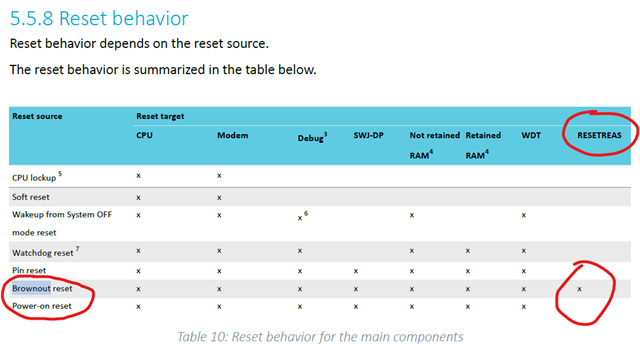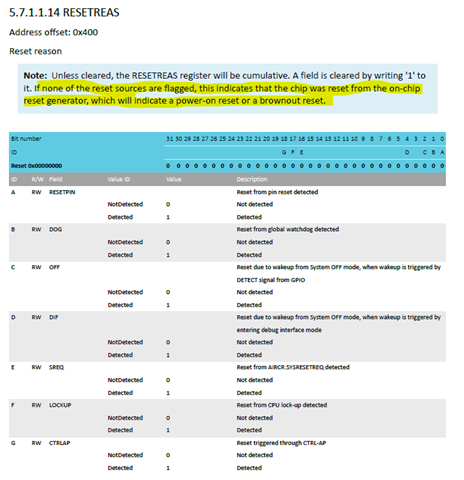Dear All,
We have a custom design with a nRF9160 powered by Lithium primary batteries.
When batteries end of life is coming or sometimes when harsh environmental operating conditions occurs (high/low temperatures, weak network conditions, etc.), battery voltage may drop below 2.8VDC when modem is powered-on (high peak current not handled by bulk capacitors).
We can see in the last datasheet, BOR and POR voltage thresholds:

And also the reset behavior between POR and BOR, where RESETREAS register would help us to differentiate these 2 sources of reset:

Then take a look to the RESETREAS register:

There's no flag helping to differentiate between BOR and POR.
Are we missing something?
What could be a workaround to differentiate at Nordic's power-up if it has been caused by a reset or a nominal power-on?
Many of our devices on the field show unpredictable behavior because of these resets, like entering in a rebooting loop which could last several minutes (which accelerates discharge of battery)
We'd like to find a FW workaround, any advice would be kindly appreciated.
Regards


